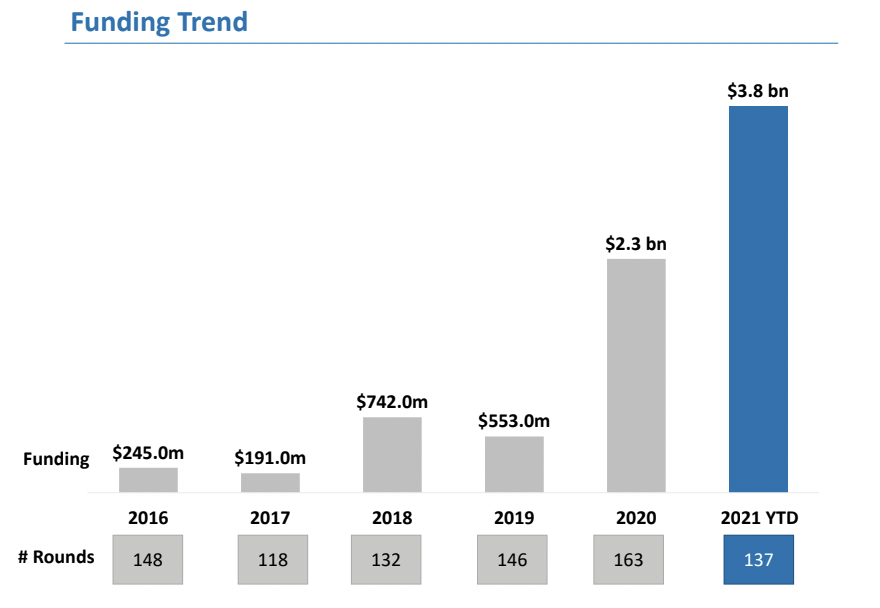India’s online education market is expected to be worth more than USD 3.5 billion by 2022—almost five times the USD 735 million it was worth in 2019, according to a new report by Mumbai-based edtech-focused VC firm BLinC Invest.
While edtech offerings across grades 1–12 are projected to increase 6.4x to create a USD 1.7 billion market by the end of next year, the post-K12 market is set to grow 3.7x to reach USD 1.8 billion, said the report, exclusively shared with KrASIA. Overall, the edtech market is estimated to reach the USD 30 billion mark by 2030.
Globally, the edtech industry is projected to almost double to USD 404 billion by 2025 from USD 227 billion in 2020. India boasts the world’s second-largest e-learning market after the US. The country has over 9000 education technology startups, of which about 750 firms have raised a total of USD 8.5 billion to date, the report found.
Over the last five years, VC funding in the segment has grown about ten times—from USD 245 million in 2016 to USD 2.3 billion in 2020. Last year, India was only second to China in terms of edtech funding activity. With China’s crackdown on online education companies earlier this year, many industry veterans believe global investors are betting more aggressively on the Indian market.
This is reflected in the ongoing funding deluge for local online education startups this year. At about USD 3.8 billion, total edtech funding between January and August 2021 had already surpassed capital inflow in the sector in the entire 2020, the report noted.

“The edtech sector is expected to grow at a CAGR (compound annual growth rate) of over 15% from USD 2.8 billion in 2020 to USD 30 billion in 2030,” Amit Ratanpal, founder and managing director of BLinC Invest, told KrASIA. “Edtech companies are targeting specific use cases to cater to customers across the entire value chain. We can affirm that India will be one of the largest export hubs for the global education sector, with a plethora of unicorns emerging from this space.”
According to BLinC Invest, growth in the Indian edtech sector is underpinned by increasing digitization, awareness, funding, and government policy support.
About 28.25% of India’s 1.3 billion population is in the age group of 0–14 years. Furthermore, there are 264 million school-going students in the country—the highest in the world. In addition, the number of active internet users is expected to reach 500 million by 2022, up from 350 million in 2019.
Notably, almost 80% of students in K12 are aware of e-learning solutions and their willingness to pay for such services is moderate to high, the report said.
“Coronavirus has blurred the lines between physical and digital classrooms,” said the report. “Parents and schools have made the critical mental leap that was required to adopt distance learning as a norm, and while the driver might have been the pandemic, consequent benefits like access to global quality teachers with seamless flexibility means the zeitgeist is here to stay.”
“While the feasibility of true online schools post the pandemic remains to be seen, there is no doubt offline schools will continue to retain many elements of the online format to enhance and further engage with their students,” it added.
In the higher education space, there has been a shift in mindset as well. “The learners have accepted online education as a viable option for both professional and university education,” the report said.
BLinC Invest believes that competition will intensify in the edtech space, and companies will look to reduce user acquisition costs and constantly add value to existing products in order to retain customers. “Profitability will be a concern in the near future,” it added.
